Sabin Hall (1912)
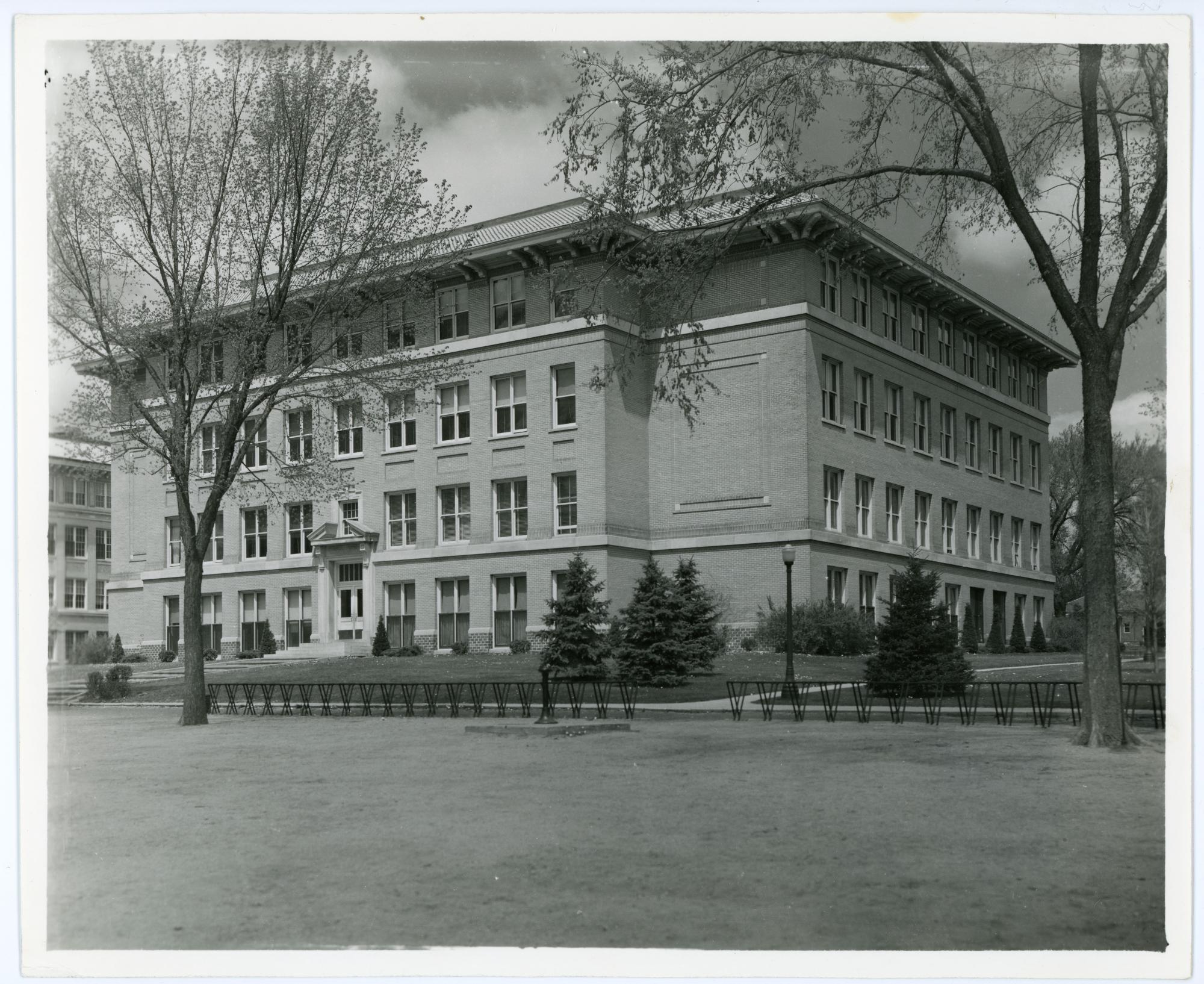
The building now known as Sabin Hall was designed to be the home of the campus Training School, a place for youngsters from the community to attend school and for college students to do their practice teaching. Prior to the construction of the Training School Building, these functions had been housed in a number of other campus locations, none of which was especially well-suited for the purpose. The renewal of the millage tax by the Iowa General Assembly in 1911 provided the funding for the construction of the building. This tax on Iowa real estate financed the construction of most of the large red brick and limestone buildings constructed on the eastern part of the UNI campus in the early part of the twentieth century.
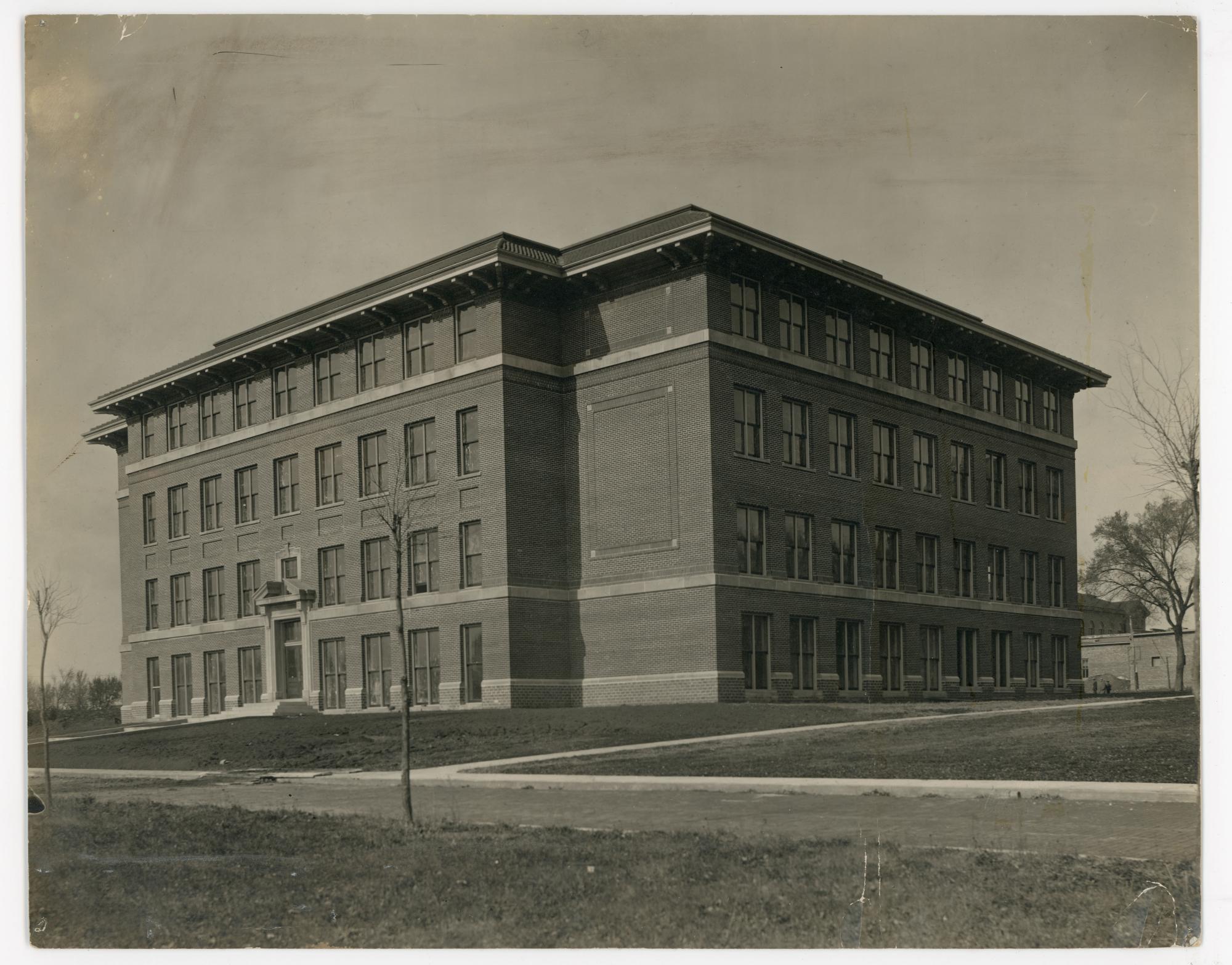
Construction on the building began in 1912. Superintendent of Buildings and Grounds James E. Robinson was the architect for the $150,000 project. It was ready for use in January 1914 and dedicated on February 10, 1914. At the dedication ceremony, D. D. Murphy, president of the State Board of Education, praised the new building and said that it ". . . symbolized proper teacher training . . . ." When it opened, the school had about 350 pupils, twenty-five teachers, and, over the course of the year, about five hundred student teachers.
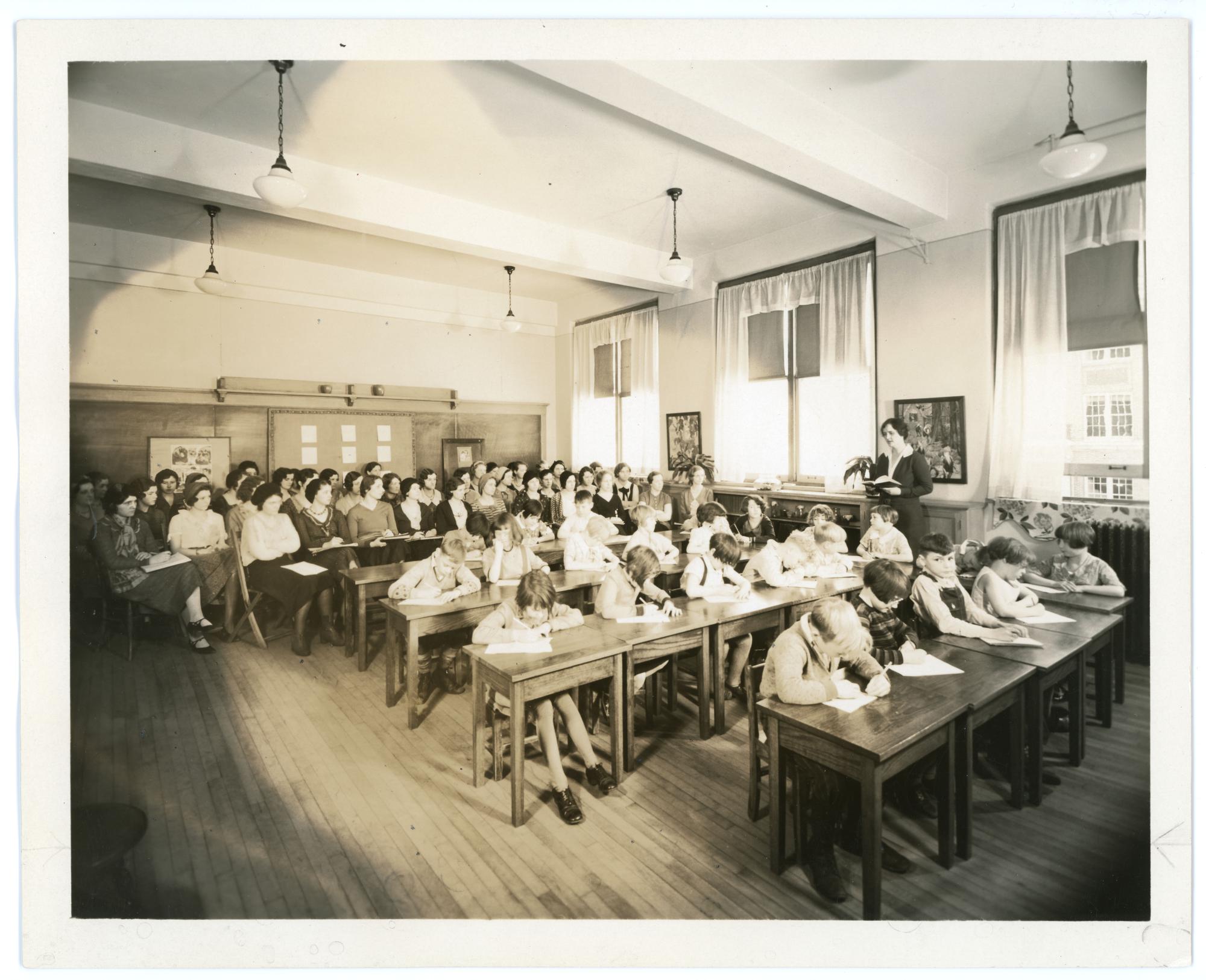
This large building, called an "educational palace" in its day, was a significant step forward for the college. Its many rooms provided instructional facilities for classes ranging from kindergarten through high school. It included space for manual training, domestic science, physical training, and student teacher demonstration and observation. The auditorium, which held four hundred people, was decorated with a copy of a Lucca della Robia frieze, a gift of the Class of 1913. The new building housed a library of three thousand volumes as well as motion picture equipment, phonographs, and a player piano.

This four-story structure was designed to be a model school building. It was a place where Teachers College students could receive instruction on proper teaching methods and then have opportunities to practice what they had learned in real classrooms under the observation of experienced teachers.

This building was initially known as the Training School, but by the late 1930s it was called the Campus School. Once work began on a new campus school in the early 1950s, the building was known briefly as the Old Campus School. On June 17, 1957, it was renamed Henry Sabin Hall.
Henry Sabin served as State Superintendent of Schools from 1888 through 1892 and 1894 through 1898. In that capacity, he also served as ex-officio president of the Iowa State Normal School Board of Directors for those same years. Henry Sabin worked closely with President Seerley to establish the certification of normal school graduates on the basis of training rather than examination; the permanent establishment of the campus training school; and the development of special curricula in teacher training. Henry Sabin was instrumental in securing funds for the buildings now known as Lang Hall, the Innovative Teaching and Training Center, Begeman Hall, the President's House, Seerley Hall, Wright Hall, and the old Campus School itself. He was a strong supporter and friend of the school during its difficult early years.
The building served as a school and student teacher training facility for over forty years. But as early as the end of World War II, college officials were convinced that a new school and training building was necessary.


While the old building was still structurally sound, it could no longer serve as a model for modern school arrangement and management. Sufficient funding finally materialized in 1950 to begin work on the new facility that would become the Price Laboratory School. The elementary unit of the new school was completed on August 10, 1953, and the elementary students and teachers moved out of the Old Campus School. The high school students continued to use the old building until the secondary unit of the new building was completed in 1955.
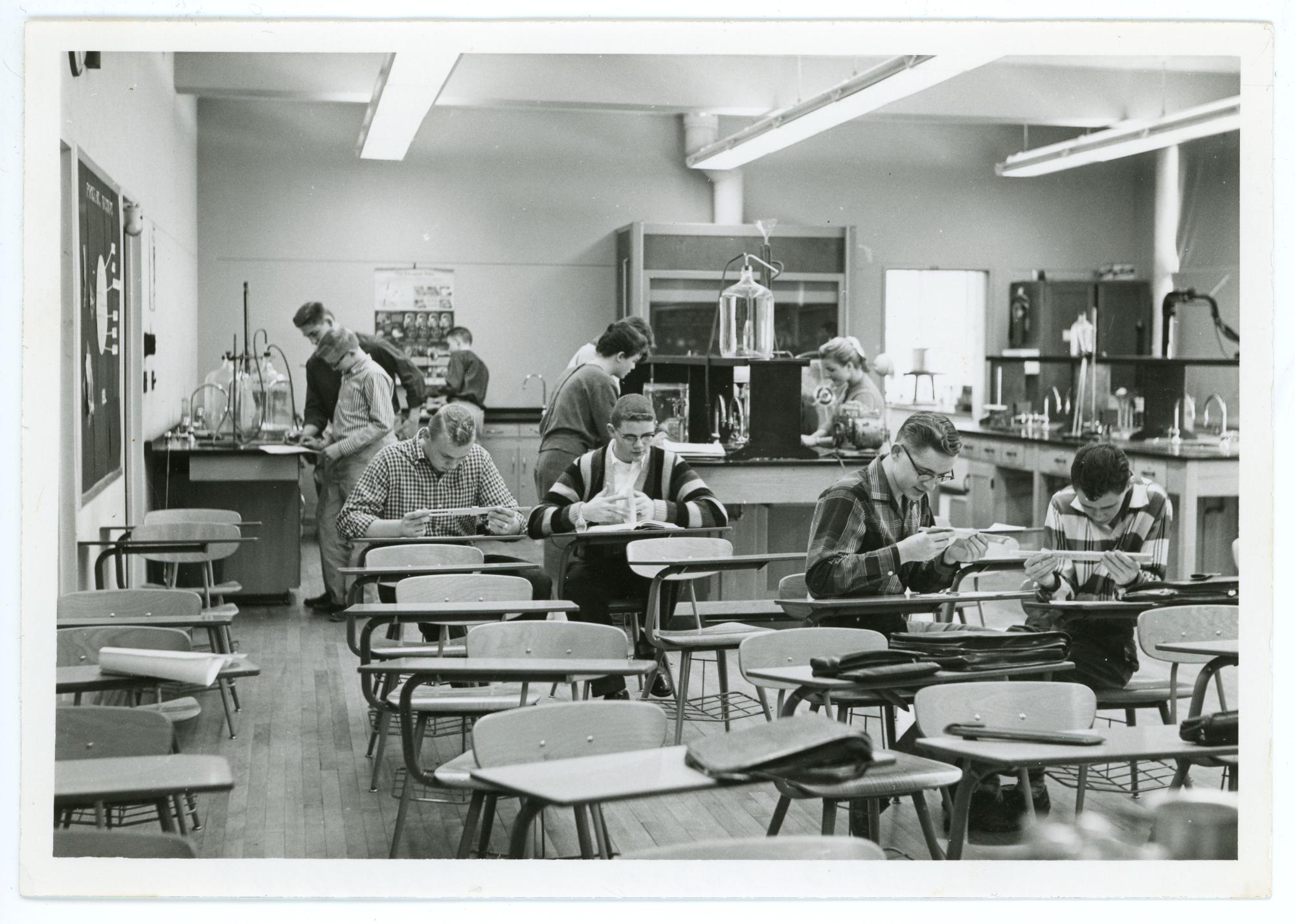
After the last of the Laboratory School students moved out of the building in 1955, the Social Science Department moved into the third and part of the second floors, and part of the Science Department moved into the remaining area on the second floor. In 1956, after remodeling was completed, the Department of Business Education moved into the first and basement floors.
Sabin Hall has undergone several major remodeling projects that reflect its changing functions. One major project took place in the late 1940's and early 1950's. A second remodeling effort, with a budget of $424,000, replaced the entire heating and cooling system, added an elevator, upgraded electrical wiring, and made other repairs in 1968. A new conference room and ten new offices also resulted from this project.
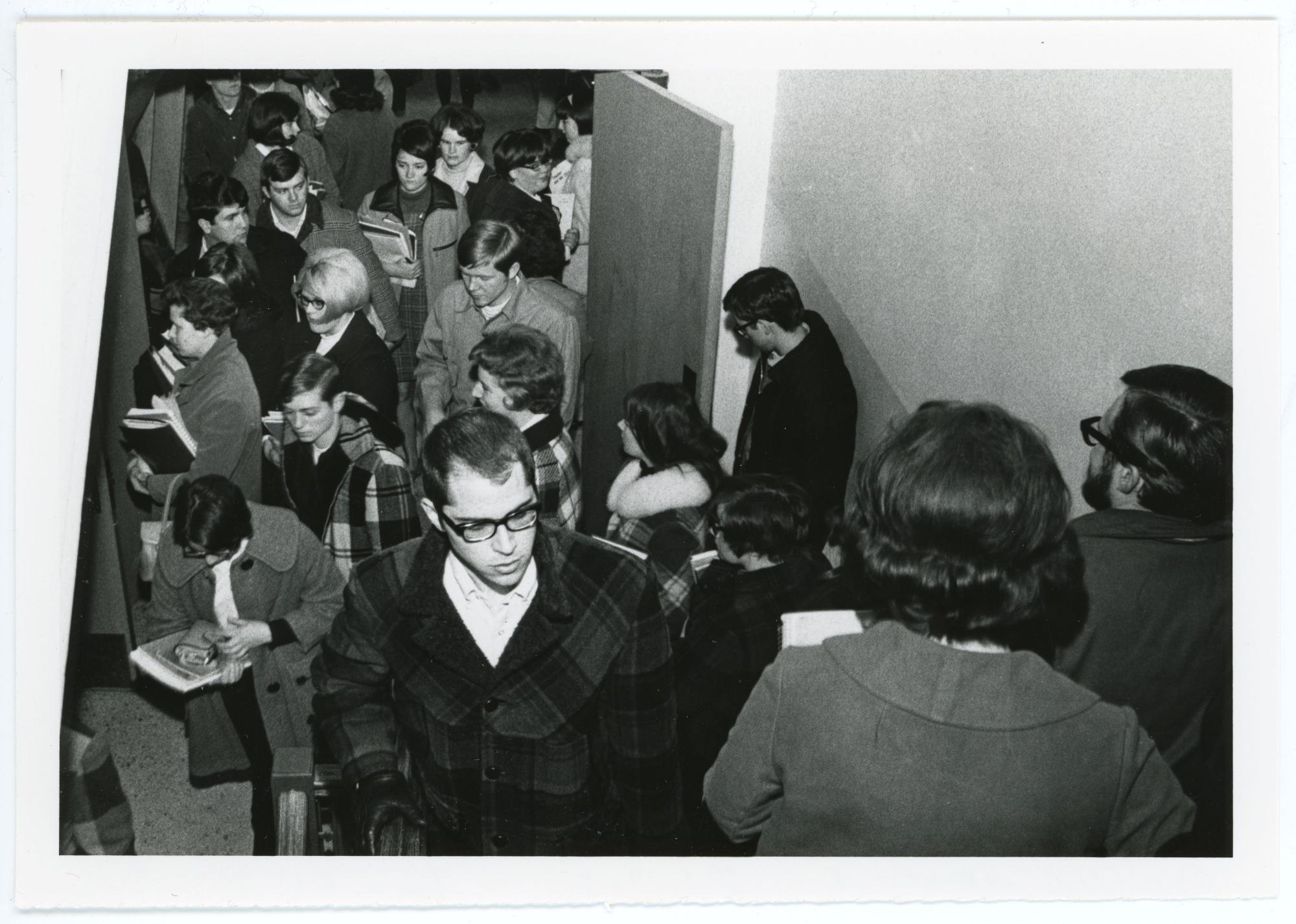
To relieve congestion at Sabin Hall's northwest door, a second story walkway was completed between the Maucker Union and Sabin Hall.
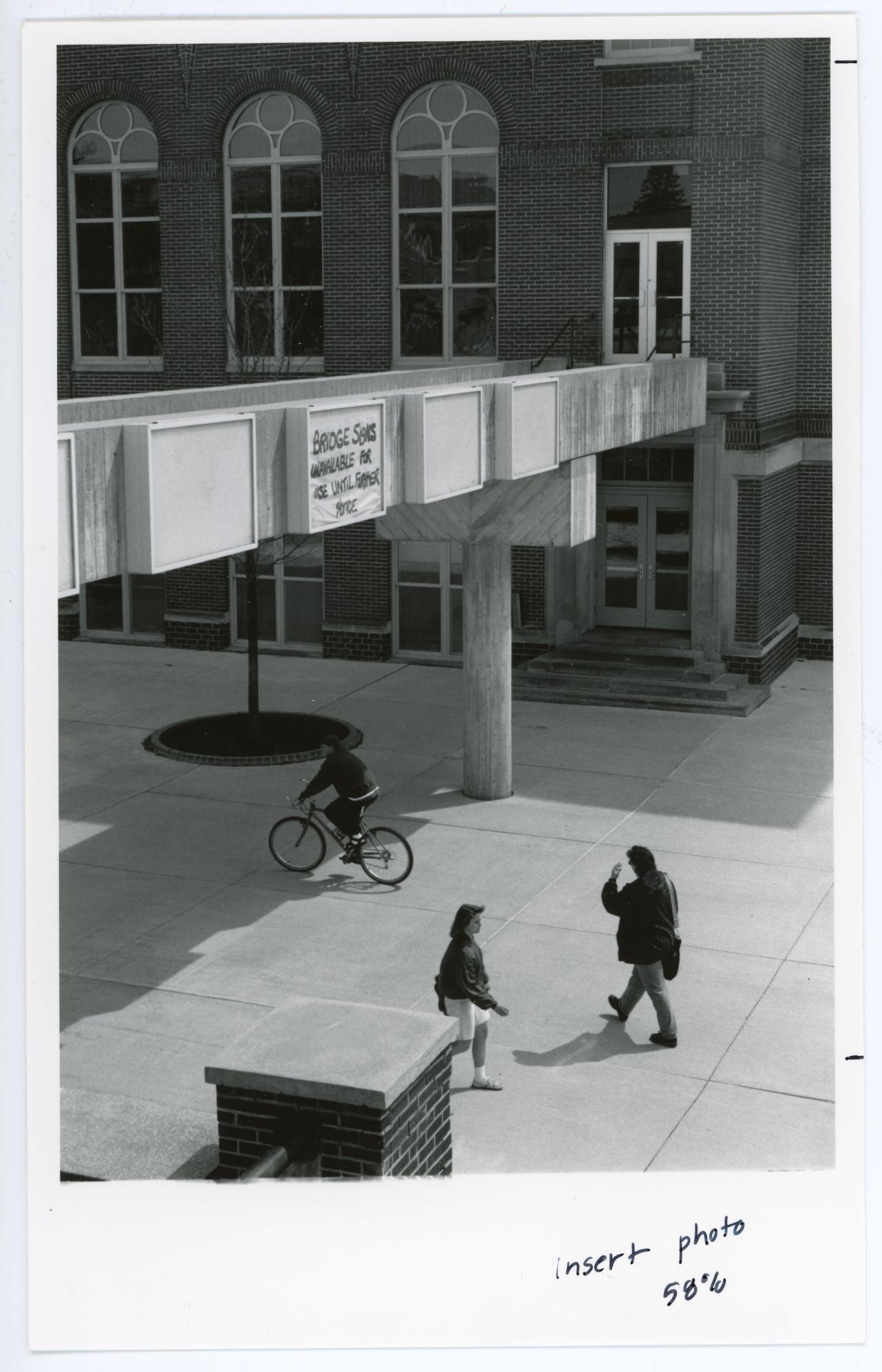
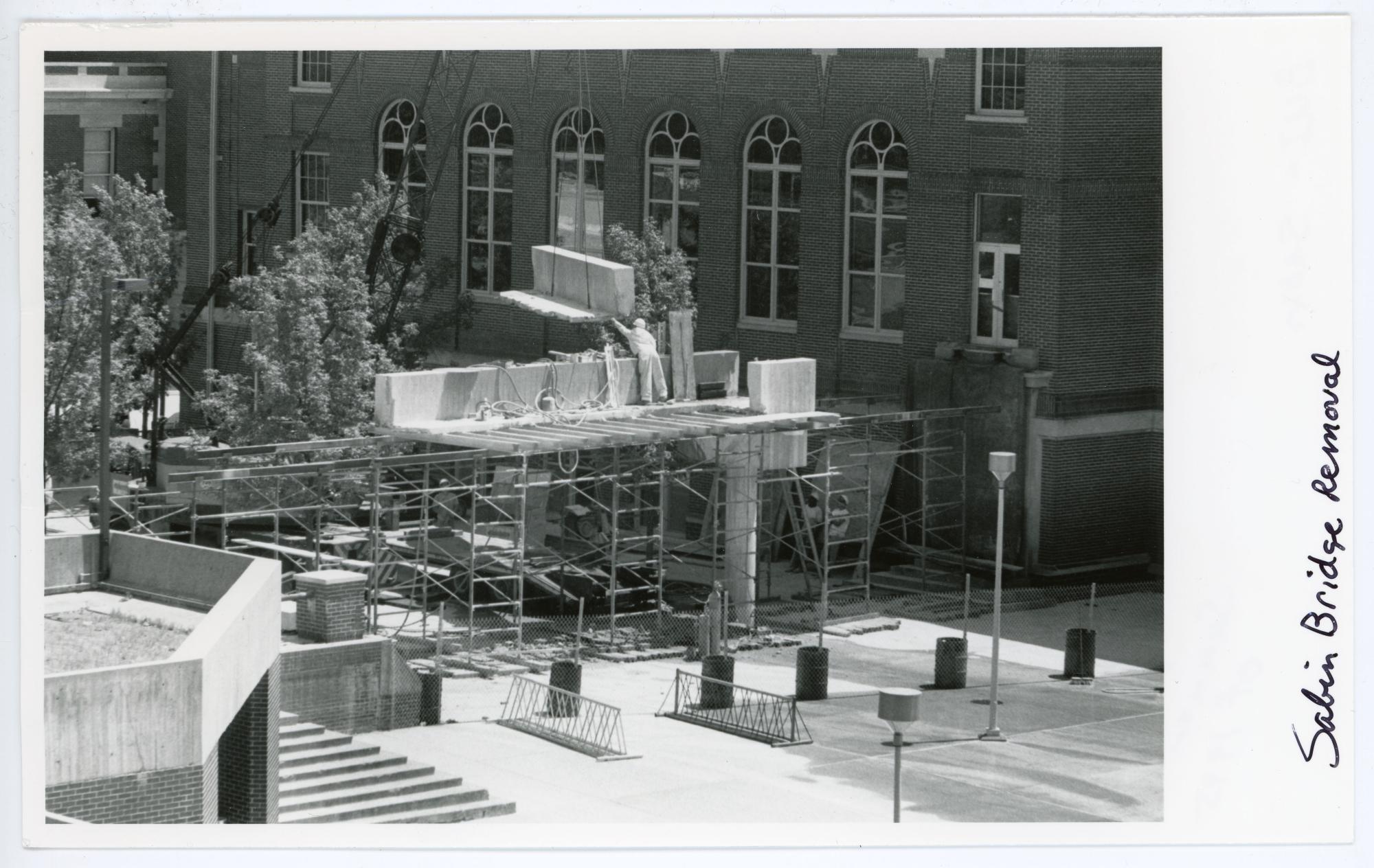
The elevated walkway was removed during repairs and renovations to the Maucker Union roof and plaza in 1995. Its utility had been debatable, but at least it had been a good place to hang signs.
In 1969 the Studio Theatre in Sabin Hall was remodeled and opened with a production of Blithe Spirit, under the direction of Professor Stanley Wood. Just ten years later, with the new Strayer-Wood Theatre available, the Regents approved a $120,000 project to convert the old Sabin Studio Theatre into space for the Department of Economics. The reconstruction work did not actually take place until 1983. In the middle 1980s the Sabin Hall roof received improvements. A summer 1994 project gave the building new windows and some new doors. In addition, the building was connected to the campus computer network at that time.
Sabin Hall housed offices and classrooms of the College of Social and Behavioral Sciences, and the Departments of Political Science and Geography. But, due to its age, the building was placed on the university's five year list of possible capital projects for a $9.3 million renovation.
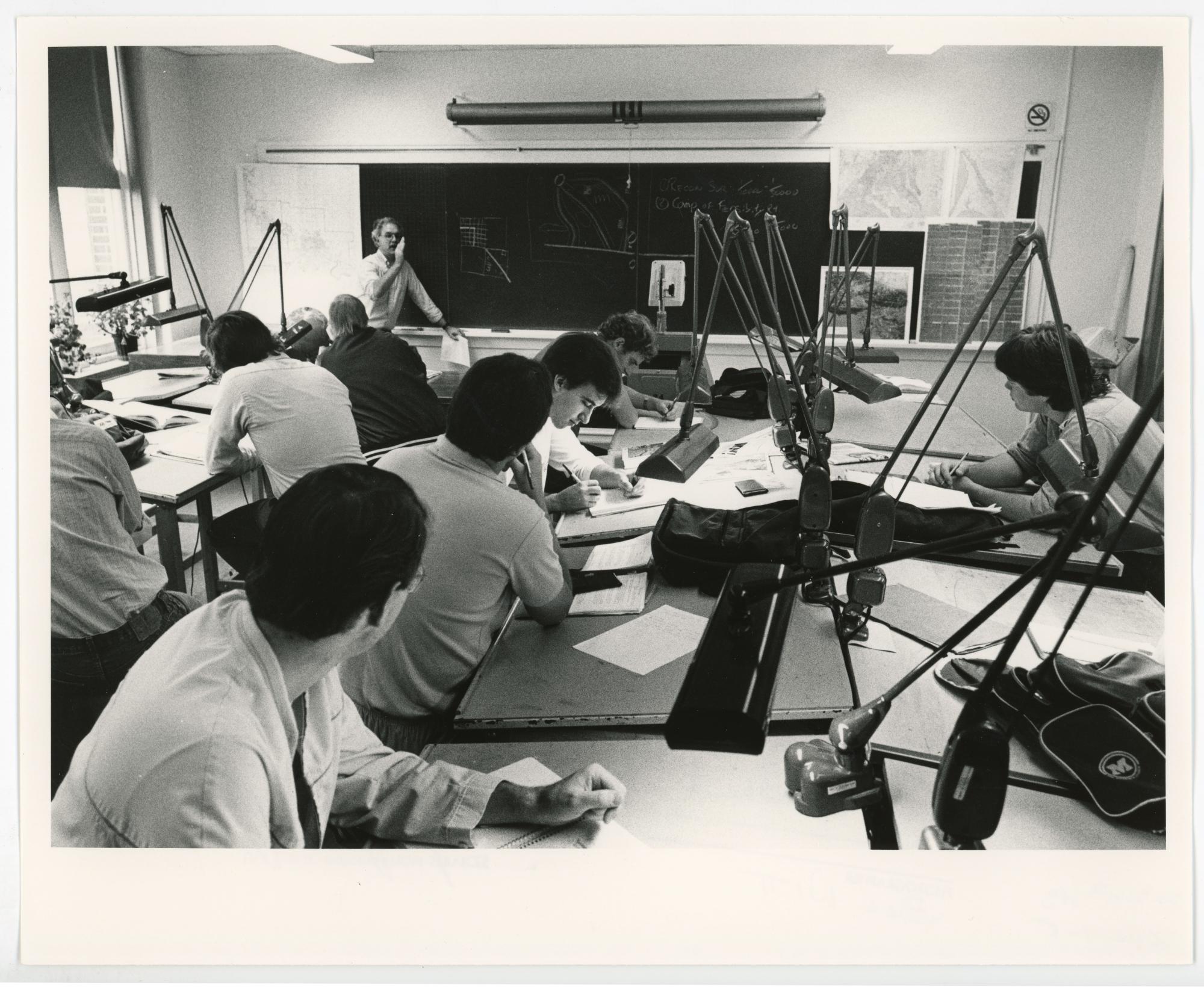
In March 2008, the Board of Regents approved academic revenue bonding to begin the renovation of Sabin Hall. Architects and consultants began working on plans that were scheduled to go out for bid in the spring of 2009. The project was scheduled to last about eighteen months. Associate Vice President for Facilities and Planning Morris Mikkelsen stated that the renovation design would aim at energy conservation and sustainability in hopes that the building would qualify under the Leadership in Energy and Environmental Design Green Building Rating System. Sabin Hall would be the first campus building to be certified under this system.
Sabin Hall was closed for reconstruction after the fall semester of 2008. Units formerly housed in Sabin Hall transferred operations to other campus buildings. Brooks Borg Skiles Architecture Engineering LLC, developed plans for the renovation. That company is a successor organization to Proudfoot, Bird, and Rawson, the company that was associated with the original design of the building. After the building was cleared, serious demolition and reconstruction got underway in May 2009. Lead contractors included Larson Construction Company, Nikkel and Associates, and Young Plumbing and Heating Company.
Work progressed over the next year and a half. The entire project was carried out with an eye to sustainability. The designers enhanced access to natural light. They reconditioned and re-used furniture, doors, chalkboards, and wood trim that had been in use prior to the renovation. New plumbing reduced water use. New mechanical systems improved the comfort and quality of indoor air. The designers acquired necessary new material from sources as close to campus as possible. The renovation also allowed designers to meet enhanced life safety codes.
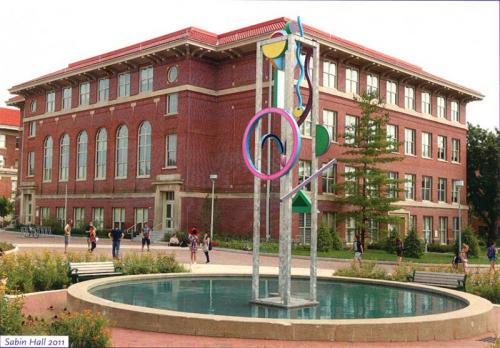
Work neared completion by the end of 2010, though crews were still busy with finish work into the first weeks of 2011. Office units from the College of Social and Behavioral Sciences began moving back to Sabin Hall in December 2010. Classes resumed in the building at the beginning of the spring 2011 semester. Landscaping and sidewalk work continued through the summer of 2011.
Sabin Hall was re-dedicated on September 23, 2011, with a program of speakers and a reception. Featured speakers included Dean Phlip Mauceri, President Benjamin Allen, and representatives of the Governor, the Regents, the university faculty, the students, and College of Social and Behavioral Sciences alumni. The re-dedication program brochure notes that the renovated building serves as the primary instructional facility for the College of Social and Behavioral Sciences. Sabin Hall has about seven hundred classroom seats, a large lecture hall, excellent computer facilities, and offices for faculty and staff. About two thousand students have classes in Sabin Hall.
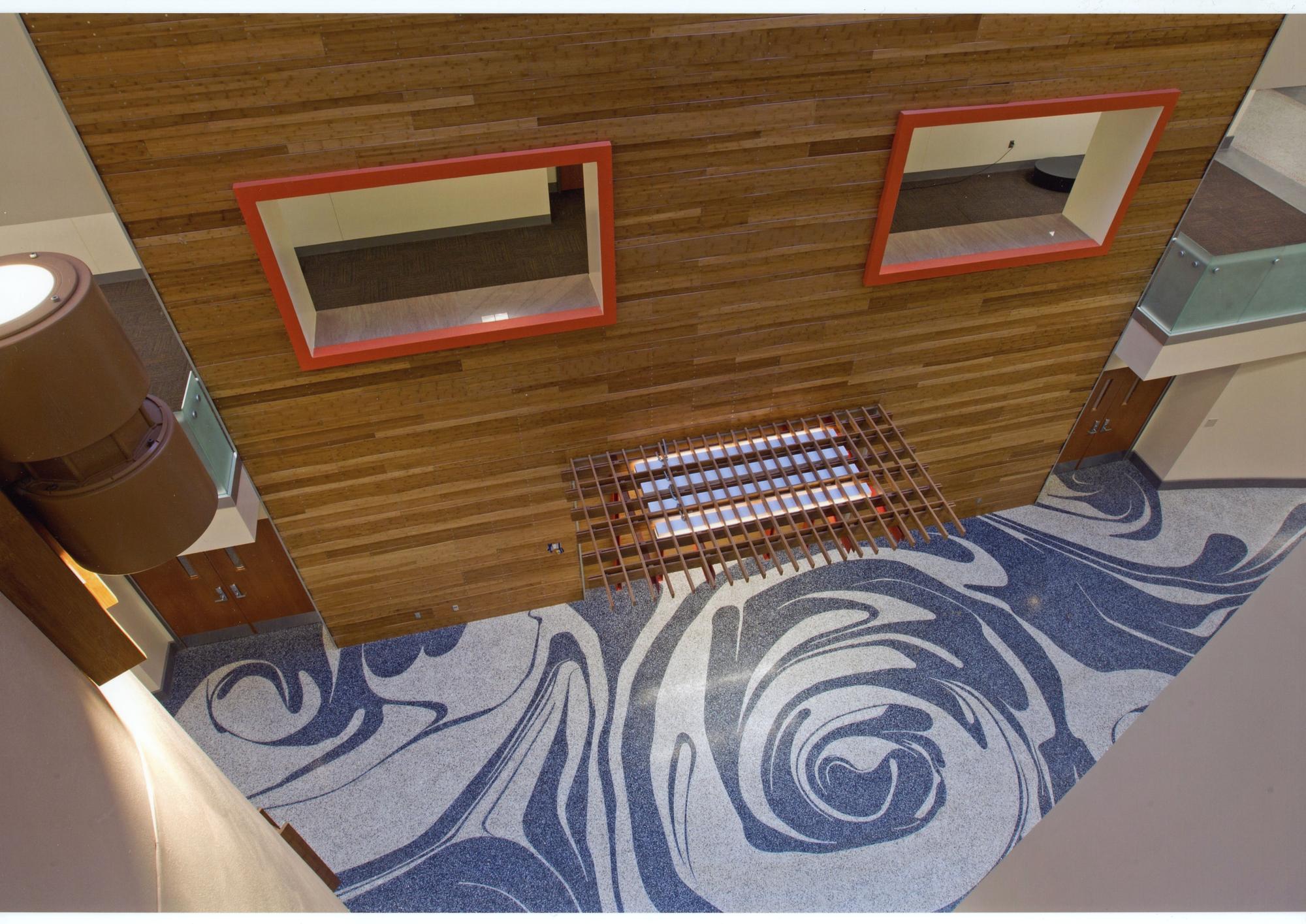
Lynn Basa produced the artwork for the renovated building. That work consists of a terrazzo floor design, entitled Coursing Through Life, in the new atrium. The artist stated in the re-dedication program, "For public work, I research the site and what the stakeholder's vision is and try to interpret it through my aesthetic lens to make something that both their public and I can feel good about." The artist used recycled glass and mirror, mother of pearl, and white marble to created a striking, swirling design that shows up especially well under the overhead natural light. The work covers over one thousand square feet.
Compiled by Special Collections Library Assistant Susan Witthoft; edited by University Archivist Gerald L. Peterson, July 1996; substantially revised by Gerald L. Peterson, with research assistance by Student Assistant Jen Carlson and scanning by Special Collections Library Assistant Gail Briddle, April 2004; substantially revised again by Gerald L. Peterson, January 14, 2011; last updated September 30, 2011 (GP); photos and citation updated by Graduate Assistant Eliza Mussmann March 30, 2023.
